|
The majority of production boats in use today are built with multiple layers of reinforcing fabrics and core
materials bonded together with polyester resins. Apart from the usual damage from collisions, grounding and the forces of nature,
fiberglass boats suffer from age related issues such as fatigue and moisture
ingress. Although many of these problems can be intimidating, with correct techniques and materials they are not difficult to solve.
Restoration may include repairing chips, cracks and major structural damage,
followed by repainting, if necessary. Most repairs are small where a boat
has crashed. See the examples below.
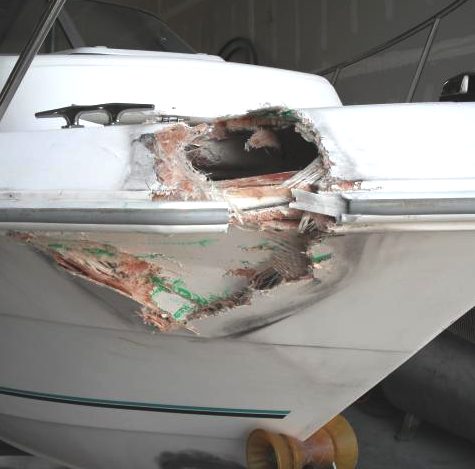
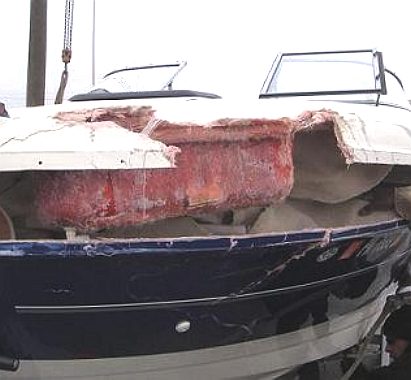
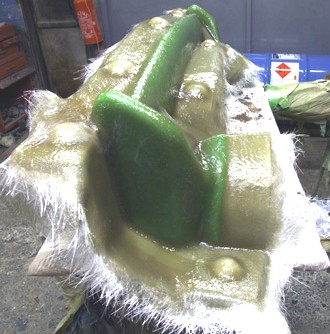
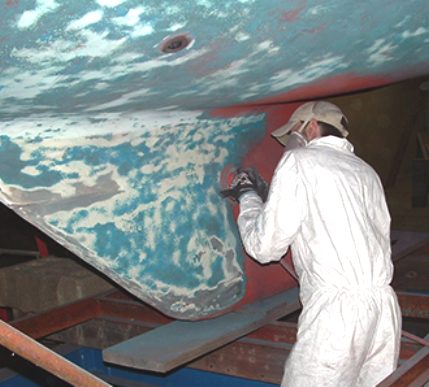
GRP
DEVELOPMENT
Glass
fiber (also spelled glass fibre) is a material consisting of numerous
extremely fine fibers of glass - yes, a similar glass to that you may drink
from.
Glassmakers throughout history have experimented with glass fibers, but mass
manufacture of glass fiber was only made possible with the invention of
finer machine tooling. In 1893, Edward Drummond Libbey exhibited a dress at
the World's Columbian Exposition incorporating glass fibers with the
diameter and texture of silk fibers. This was first worn by the popular
stage actress of the time Georgia Cayvan. Glass fibres can also occur
naturally, as Pele's hair.
Glass wool, which is commonly known as "fiberglass" today,
however, was invented in 1938 by Russell Games Slayter of Owens-Corning as a
material to be used as insulation. It is marketed under the trade name
Fiberglas, which has become a genericized trademark.
Glass fiber is commonly used as an insulating material. It is also used as a
reinforcing agent for many polymer products; to form a very strong and light
fiber-reinforced polymer (FRP) composite material called glass-reinforced
plastic (GRP), popularly known as "fiberglass". Glass fiber has
roughly comparable properties to other fibers such as polymers and carbon
fiber. Although not as strong or as rigid as carbon
fiber, it is much
cheaper and significantly less brittle, thus suitable for production boat
hulls of moderate size, as a replacement to wood and steel.
CHEMISTRY
The basis of textile-grade glass fibers is silica, SiO2. In its pure form it
exists as a polymer, (SiO2)n. It has no true melting point but softens up to
1200°C, where it starts to degrade. At 1713°C, most of the molecules can
move about freely. If the glass is extruded and cooled quickly at this
temperature, it will be unable to form an ordered structure. In the polymer
it forms SiO4 groups which are configured as a tetrahedron with the silicon
atom at the center, and four oxygen atoms at the corners. These atoms then
form a network bonded at the corners by sharing the oxygen atoms.
The vitreous and crystalline states of silica (glass and quartz) have
similar energy levels on a molecular basis, also implying that the glassy
form is extremely stable. In order to induce crystallization, it must be
heated to temperatures above 1200°C for long periods of time.
Although pure silica is a perfectly viable glass and glass fiber, it must be
worked with at very high temperatures, which is a drawback unless its
specific chemical properties are needed. It is usual to introduce impurities
into the glass in the form of other materials to lower its working
temperature. These materials also impart various other properties to the
glass that may be beneficial in different applications. The first type of
glass used for fiber was soda lime glass or A glass. It is not very
resistant to alkali. A new type, E-glass, was formed; this is an alumino-borosilicate
glass that is alkali free (<2%). This was the first glass formulation
used for continuous filament formation. E-glass still makes up most of the
glass fiber production in the world. Its particular components may differ
slightly in percentage, but must fall within a specific range. The letter E
is used because it was originally for electrical applications. S-glass is a
high-strength formulation for use when tensile strength is the most
important property. C-glass was developed to resist attack from chemicals,
mostly acids that destroy E-glass. T-glass is a North American variant of
C-glass.
A-glass is an industry term for cullet glass, often bottles, made into
fiber. AR-glass is alkali-resistant glass. Most glass fibers have limited
solubility in water but are very dependent on pH. Chloride ions will also
attack and dissolve E-glass surfaces.
E-glass does not really melt, but softens instead, the softening point being
"the temperature at which a 0.55–0.77 mm diameter fiber 235 mm long,
elongates under its own weight at 1 mm/min when suspended vertically and
heated at the rate of 5°C per minute". The strain point is reached
when the glass has a viscosity of 1014.5 poise. The annealing point, which
is the temperature where the internal stresses are reduced to an acceptable
commercial limit in 15 minutes, is marked by a viscosity of 1013 poise.
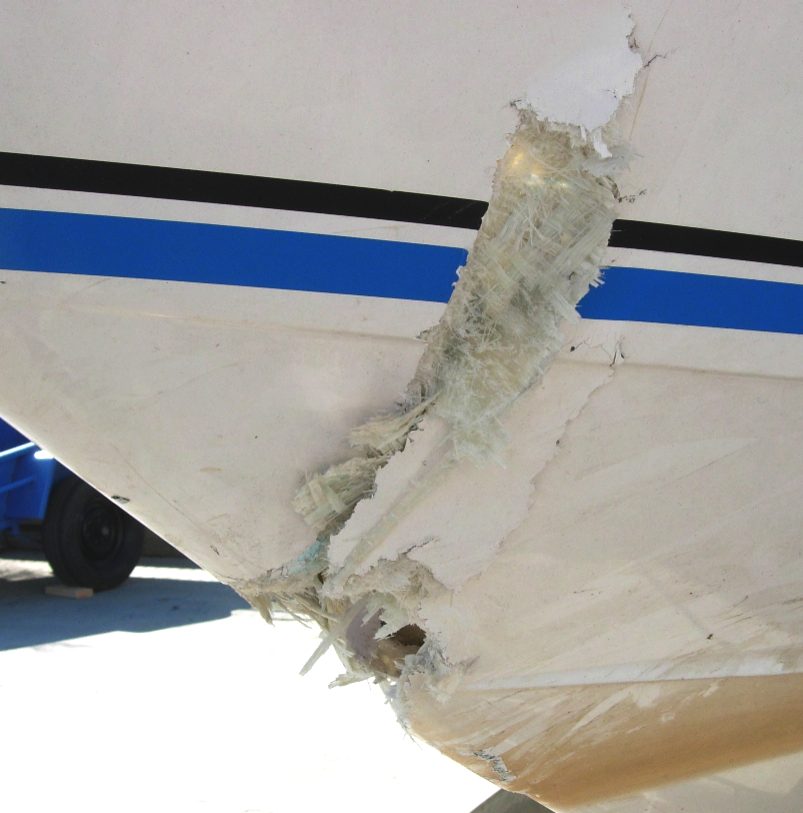
PROPERTIES
Glass fibers are useful thermal insulators because of their high ratio of
surface area to weight. However, the increased surface area makes them much
more susceptible to chemical attack. By trapping air within them, blocks of
glass fiber make good thermal insulation, with a thermal conductivity of the
order of 0.05 W/(m·K).
The strength of glass is usually tested and reported for "virgin"
or pristine fibers—those that have just been manufactured. The freshest,
thinnest fibers are the strongest because the thinner fibers are more
ductile. The more the surface is scratched, the less the resulting tenacity.
Because glass has an amorphous structure, its properties are the same along
the fiber and across the fiber. Humidity is an important factor in the
tensile strength. Moisture is easily adsorbed, and can worsen microscopic
cracks and surface defects, and lessen tenacity.
In contrast to carbon fiber, glass can undergo more elongation before it
breaks. There is a correlation between bending diameter of the filament and
the filament diameter. The viscosity of the molten glass is very important
for manufacturing success. During drawing (pulling of the glass to reduce
fiber circumference), the viscosity must be relatively low. If it is too
high, the fiber will break during drawing. However, if it is too low, the
glass will form droplets rather than drawing out into fiber.
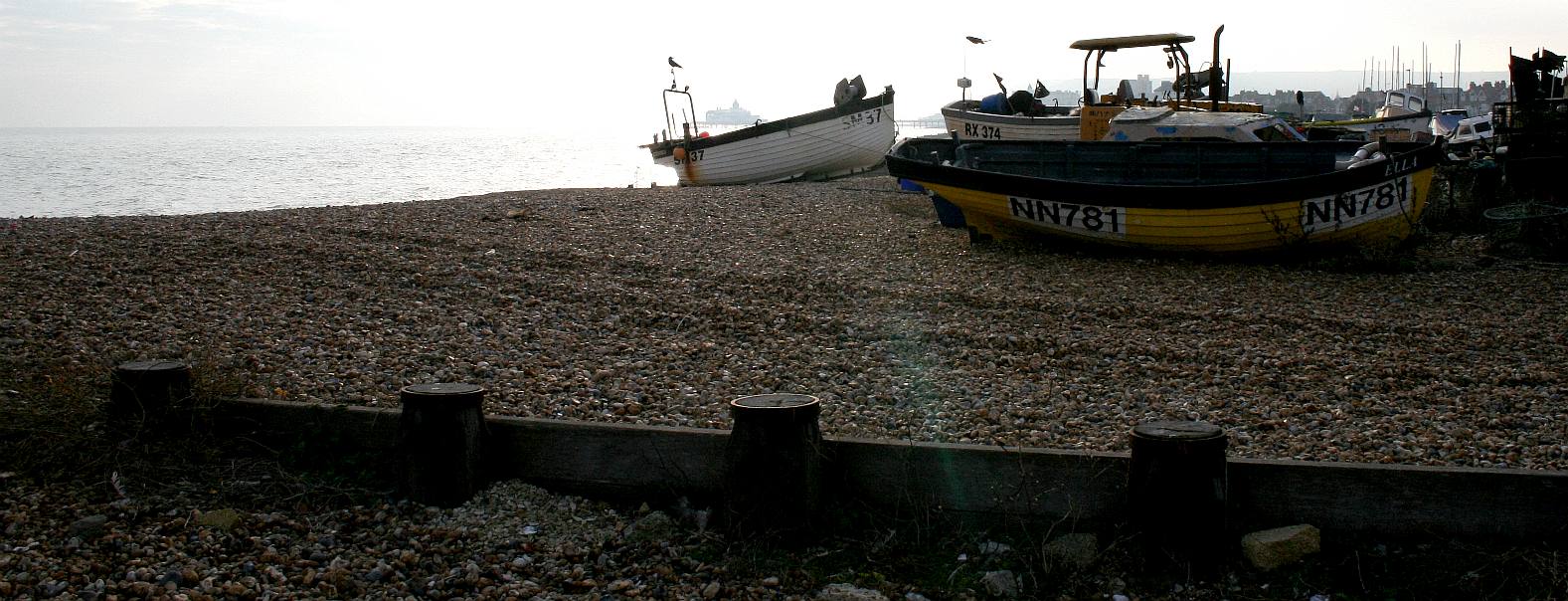
FISHING
BOATS - Eastbourne by the seaside, with a very small fleet of fishing
boats. This picture is looking south-west out to sea. In the background you
can see the pier
that was badly damaged a few years ago. Copyright © photograph 5 December
2016. You will need the permission of Bluebird
Marine Systems to reproduce this picture, except for private study and
educational purposes.
USES
Uses for regular glass fiber include mats and fabrics for thermal
insulation, electrical insulation, sound insulation, high-strength fabrics
or heat- and corrosion-resistant fabrics. It is also used to reinforce of
various materials, such as tent poles, pole vault poles, arrows, bows and
crossbows, translucent roofing panels, automobile bodies, hockey sticks,
surfboards, boat hulls, and paper honeycomb. It has been used for medical
purposes in casts. Glass fiber is extensively used for making FRP tanks and
vessels.
Open-weave glass fiber grids are used to reinforce asphalt pavement.
Non-woven glass fiber/polymer blend mats are used saturated with asphalt
emulsion and overlayes with asphalt, producing a waterproof, crack-resistant
membrane. Use of glass-fiber reinforced Polymer rebar instead of steel rebar
shows promise in areas where avoidance of steel corrosion is desired.
EXAMPLE
MANUFACTURER - EXPORTER
You Chang Carbon Co., Ltd. Tel:+82-2-408-0670 Fax :+82-2-408-0671
A-No.305, Jamsil the sharp star park, 7-14, sincheon-dong, songpa-gu, Seoul, Korea.
http://www.ycglassfiber.com
customers Tri-Cast Composite Tubes Ltd
http://www.tri-cast.co.uk
Glassfiber fabric list.
A) YC-108 / 318 / 324 / 7500 to kayaks, canoe and canoe paddles manufacturers.
Customer M.A.R. Kayaks Lda http://www.nelo.eu
B) YC-7781 Phenolic RC 44%-Tack 2 prepreg for Aerospace and Aviation application.
Customer AAT Composites (Pty) Ltd
http://www.aatcomposites.com
C) YC- 318 (193g/m2) is for Vessel FRP and Injection Molded Parts application
D) YC- 224(302g/m2) is for Toll bar, Rod, Pipe application
E) YC- 113(127g) is for guide before coating and surface lining application
F) YC-1130815 (155g) is for fireproof and heat-resistance cable : Urethane Resin and gray color
|
CUSTOM
MOLDING & MOBILE REPAIR SERVICE
Pevensey
Bay Marine specialise
in quality GRP
glass
fiber repairs using polyester, vinalester and epoxy resins, to
our customers requirements.
We
are committed to working closely with our customers to provide
them with a service that will meet with all their requirements.
The majority of our work is on site repairs. In the marina, or in
dry dock. Our expert in sailing boat and power yachts will.
We
repair classic racing cars and also produce replacement fibreglass
parts. Our skilled craftsmen have 25 years experience in the
trade.
PEVENSEY BAY MARINE
Sunset Close
Pevensey, East Sussex, England.
We have been repairing boats for over 20 years. As Dateline Marine
Services, we looked after many of the Honda Formula 4 stroke
off-shore race boats, both 150 and 225 class.
We repair sports boats, jet skis, car bodywork and much more. We
also undertake project management for small craft restoration. We offer a mobile/on site repair service for your craft.
We also buy (running or not) and sell outboard motors, small boats
and other marine related items.
We offer free advice and a friendly service using only quality
approved materials.
Contacts:
Onsite Service: LLoyd Stebbings
Email:
pevenseymarine@aol.com
Tel:
07885 022436
Website:
www.pevenseybaymarine.com/

|
COMPOSITE
DIR
|
How
to build a boat - Youtube
|
Fibreglass
moulding
- Youtube
|
LINKS
& REFERENCE
http://en.wikipedia.org/wiki/International_Convention_for_the_Safety_of_Life_at_Sea
http://www.fiberglassandboatrepair.com/ http://ablemarine.com.au/our-services/marine-fibreglass-repair/
ECTORY
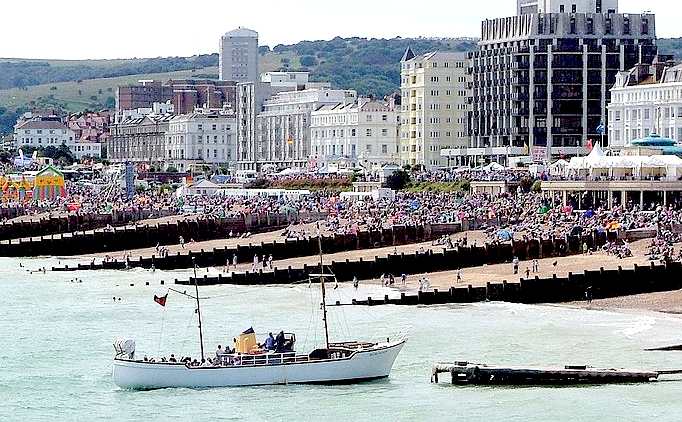
Many
middle aged and mature residents of Eastbourne will remember these pleasure
boats plying a passage from Eastbourne Pier to the Lighthouse and back on
sunny summer days.
ALLCHORN
& SOUTHERN QUEEN HISTORIC BOAT RESTORATION CAMPAIGN - MEDIA REPORTS EASTBOURNE
HERALD FEBRUARY 27 2014 The campaign to save Eastbourne’s Allchorn pleasure boats is gaining momentum.
Hundreds of people have pledged their support to the initiative to get the Southern Queen and William Allchorn back on the water as a tourist attraction.
The two boats were once a familiar sight sailing along the coast off Eastbourne to
Beachy Head and back but in the last couple of years and due to the economic crisis, have fallen into a state of disrepair and are now moored on the beach near the lifeboat station.
The plan is to obtain some form of charitable status so grants can be applied for and the long task of getting the boats back on the water can begin.
The boats’ owner Jason Foster together with mariners Lloyd Stebbings and Daniel Goldsmith are trying to save the boats and the campaign is gathering momentum with support from Eastbourne Borough Council, other local authorities and marine and historic organisations.
Lloyd said, “Time is starting to run out for these wonderful old ladies of the sea and
Eastbourne is all set to lose yet another piece of its fantastic history and something that has been part of it for the last 65 years.
“We live in a throwaway society and are in danger in losing our values, identity and our history. Both boats were built locally. It’s so important we save these beautiful craft for future generations.”
The William Allchorn was a purpose built pleasure boat, commissioned by the Allchorn Brothers of Newhaven, in 1950 and funded by the Ministry of Defence Compensation Fund as recompense for Enchantress, which was lost during the Dunkirk evacuation.
The Southern Queen was built in a barn at Westham Village not far from Pevensey Castle and taken almost two miles by road to her launching site in Norman’s Bay.
“Nearly all of the fixtures and fittings including life
rafts, some of which are handmade and are dated 1921, all the masts and rigging are still in existence, in good condition undercover and in one place near the boats but maybe not for much longer,” said Lloyd. “Time is getting short now and a year or so down the road they will become so much
fire wood and yet more local history will go up in smoke and be lost for ever.”
A Facebook page has been set up and is at https://www.facebook.com/#!/williamallchorn with almost 400 people joining. 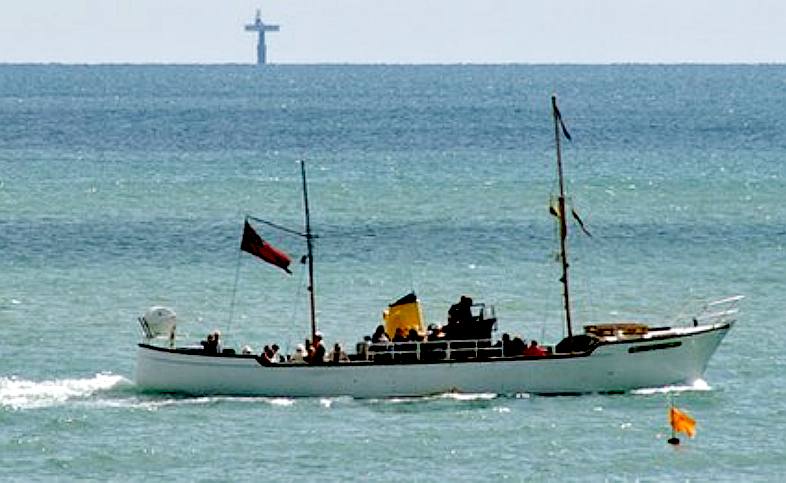
EASTBOURNE
HERALD FEBRUARY 26 2014 The Southern Queen and William Allchorn were once a familiar sight sailing along the coast off Eastbourne to Beachy Head and back but in the last couple of years and due to the economic crisis, have fallen into a state of disrepair and are now moored on the beach near the lifeboat station.
The next plan is to obtain some form of charitable status so grants can be applied for and the long task of getting the boats back on the water can begin.
Time is starting to run out for these wonderful old ladies of the sea and Eastbourne is all set to lose yet another piece of its fantastic history and something that has been part of it for the last 65 years. We live in a throwaway society and are in danger in losing our values, identity and our history.
“Both boats were built locally. It’s so important we save these beautiful craft for future generations.
The William Allchorn was a purpose built pleasure boat, commissioned by the Allchorn Brothers of Newhaven, in 1950 and funded by the Ministry of Defence Compensation Fund as recompense for Enchantress, which was lost during the Dunkirk evacuation.
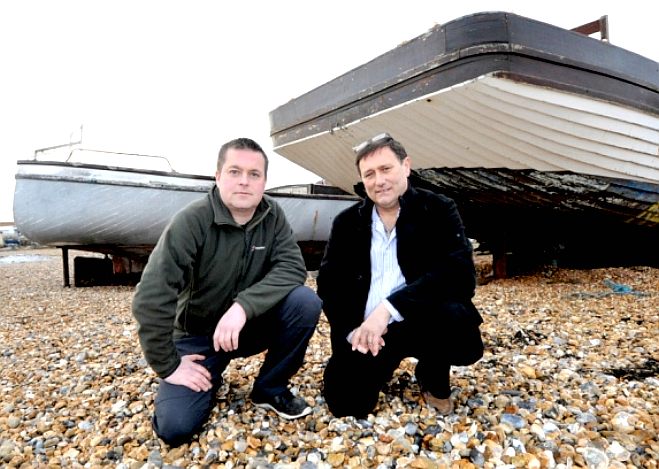
Jason
Foster and Lloyd Stebbings pictured in front of the William Allchorn and
Southern Queen boats that so badly need attention. This is a very rare opportunity to help or become part of a restoration project to return the boats to the sea and restore some of Eastbourne’s pride as a top UK holiday resort.
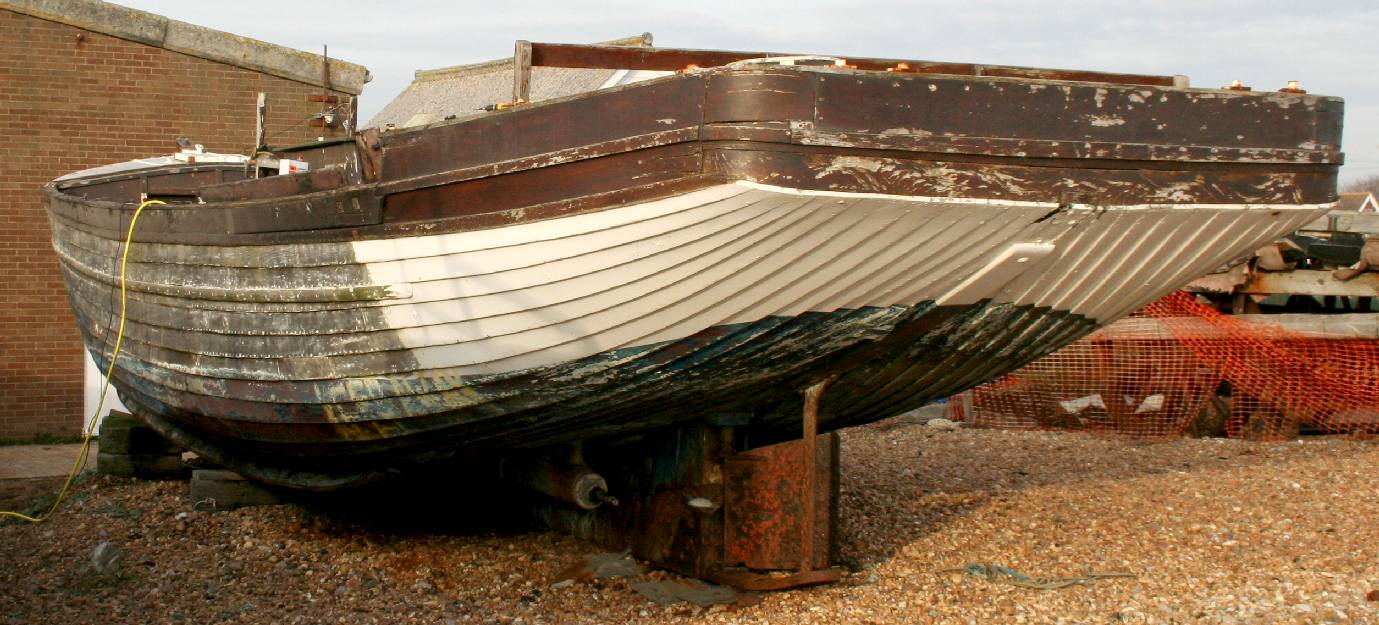
DECEMBER
2016 - This is the stern of the Southern Queen, in much need of the
attentions of boatbuilder Lloyd Stebbings and naval architect Daniel
Goldsmith. The project also benefits from the generous help of a growing band
of volunteers. Copyright © photograph 5 December 2016. You will need the
permission of Bluebird Marine Systems to reproduce this picture, except for
private study and educational purposes.
“We understand this is a long term project but we need to be able to buy and store these boats soon before they get sold as projects and wind up rotting on that mud berth from hell.”
The boats’ owner Jason Foster together with mariners Lloyd Stebbings and Daniel Goldsmith are trying to save the boats and the campaign is gathering momentum with support from Eastbourne Borough Council, other local authorities and marine and historic organisations.
Lloyd, who lives in Pevensey Bay and runs Pevensey Bay Marine, said, “One big mistake that we are about to make is to let the Southern Queen and the William Allchorn pleasure boats decay and die on the beach in Eastbourne."
The Southern Queen was built in a barn at Westham Village not far from Pevensey Castle and taken almost two miles by road to her launching site in Norman’s Bay.
Lloyd is quoted as saying: “Time is getting short now and a year or so down the road they will become so much fire wood and yet more local history will go up in smoke and be lost for ever."
Nearly all of the fixtures and fittings including life rafts, some of which are handmade and are dated 1921, all the masts and rigging are still in existence, in good condition undercover and in one place near the boats but maybe not for much longer.
Long term these boats would need to earn the own keep and pay their own way for their survival so, the initial thought is to run day shopping trips’ from Eastbourne to Brighton weather permitting and day cruises to the Isle of Wight and back through the summer months.
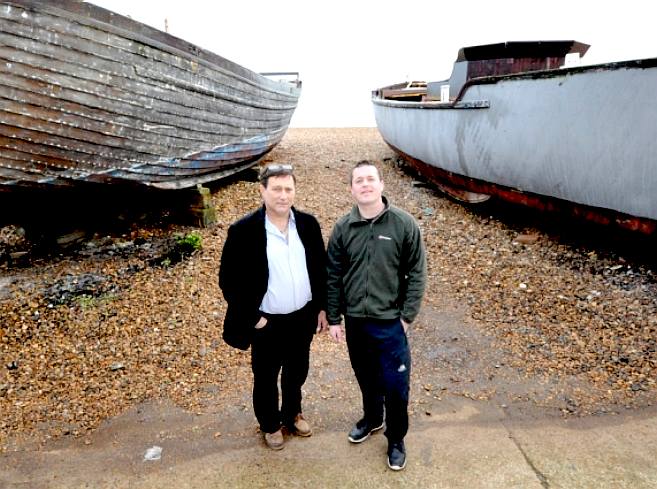
BBC
NEWS 26 FEBRUARY 2014
A campaign to raise £500,000 has been launched to save the remains of the last two pleasure boats of a 200-year-old industry in Eastbourne.
The Southern Queen and William Allchorn have not run for a number of years because of vandalism and the recession.
The boats, which had taken tourists on trips to Beachy Head lighthouse since the 1950s, are rotting on the beach.
Now boat enthusiast Lloyd Stebbings wants to raise £15,000 to buy them with the rest needed for restoration.
'Last two'
Mr Stebbings, who runs Pevensey Bay marina, said in the industry's heyday there were 113 pleasure boat licences issued in Eastbourne.
He said: "At one point the pleasure boats were moored along the coast from the Redoubt Fortress to the Wish Tower."
"These are the last two remaining and they represent 200 years of pleasure boat history in Eastbourne."
He said the Southern Queen was completed in 1950 and used to take visitors around the lighthouse with her sister vessel, the Eastbourne Queen.
The William Allchorn was a purpose-built pleasure boat, commissioned by the Allchorn Brothers of Newhaven in 1950, and funded by the Ministry of Defence.
'Rare opportunity'
Both boats have many of the original fixtures and fittings including life rafts and masts and rigging.
Mr Stebbings intends to set up a charitable trust and is appealing for private donations as well as corporate sponsorship.
He said he has had almost a dozen people come forward offering to volunteer to help restore the boats.
"This is a very rare opportunity to help or become part of a restoration project to return the boats to the sea and restore some of Eastbourne's pride as a top UK holiday resort," he added. 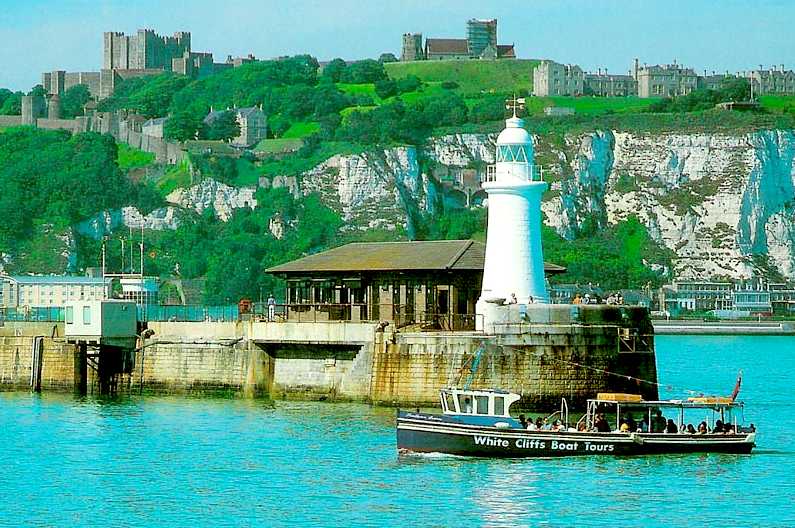
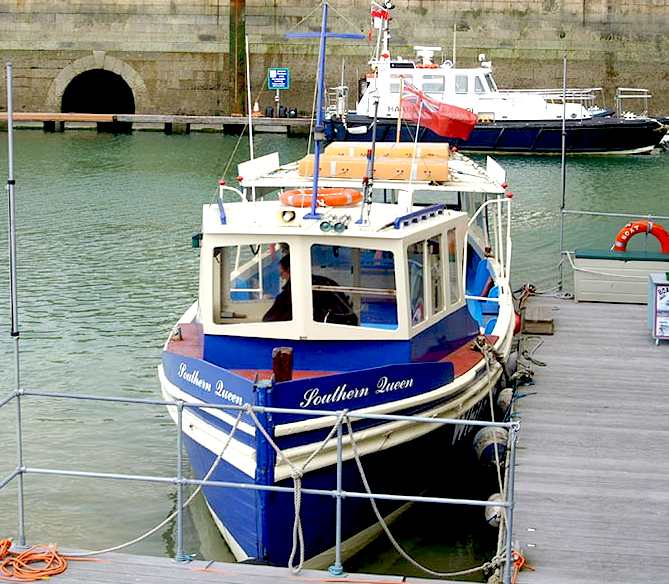
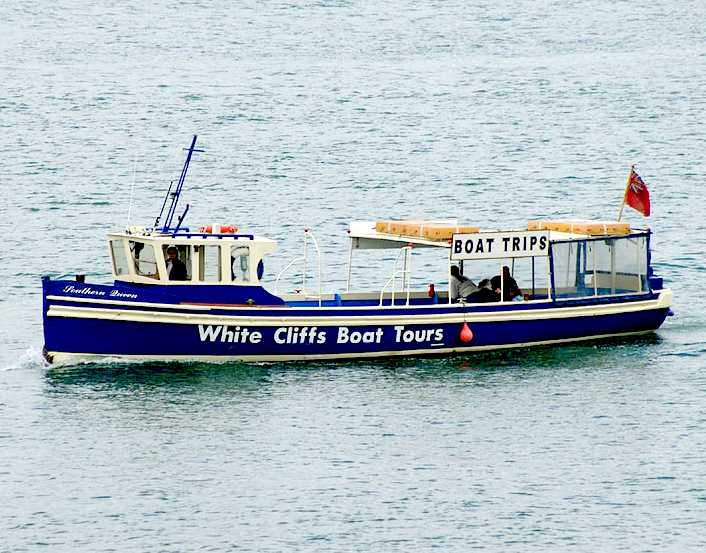
ANOTHER
SOUTHERN QUEEN IN DOVER The
"Southern Queen" at Dover was built in 1935 and was known as the "Hearts Content". She is 47ft in length, constructed of pitch pine on oak
frames and carries 70 passengers. She was one of four boats that ran from Plymouth to Bovis and Cawsands as part of a herring fleet until the 1960's. In 2001 she was welcomed to Dover and was renamed the "Southern
Queen." She is the only one of her kind left. In 2012 the captain started to restore the vessel's interior to her original wood state. Southern Queen operates harbour trips in Dover at 10:00, 12:00, 14:00 and 16:00 in good weather during the summer (weekends only: April, May, September, October). THE
MOST FAMOUS QUEEN (SMALL BOAT) OF ALL 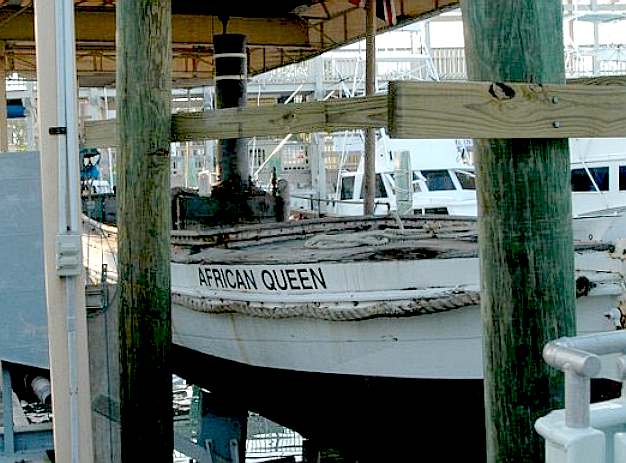
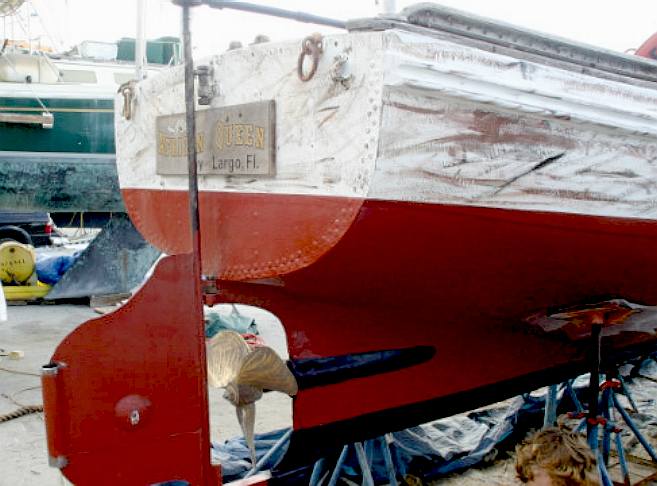
The historic vessel which provided the setting for Humphrey Bogart's only Oscar winning performance has been resurrected from the scrapheap by a movie-loving Florida couple.
The African Queen is a 100 year old steam boat famed for its starring role in the 1951 hit movie of the same name.
The classic picture - which also starred Katharine Hepburn and told the story of a Canadian steam boat captain and a British missionary working in German East Africa during the First World War
- saw Bogart receive the 1951 Academy Award for best actor.
After falling into a state of disrepair following the death of its previous owner in 2001, the vessel was spotted gathering rust in a Florida marina late last year by Suzanne Holmquist and her engineer husband, Lance.
The couple have since repaired the ailing ship and opened it up to tourists and film enthusiasts, providing cruises around the Florida Keys aboard the famous vessel.
The boat was held in a trust so we approached them and talked about restoring it," says
Holmquist on how she stumbled upon the famous vessel. "We have a tall ship business that operates right next to where the African Queen was stationed in Key Largo. It was just wasting away so we offered to restore it and put it into our charter operation," she adds. Although most famed for its role alongside Bogart and
Hepburn, the African Queen had a long and colorful life before hitting the big screen, explains
Holmquist. Built in 1912 at Lytham Shipbuilding Yard in England, the vessel was originally named the Livingstone and served as a cargo vessel for the British East Africa Rail Company.
It spent most of its first 50 years operating in the waters of the Ruki River in the northern Democratic Republic of Congo where she was used to transport a mixture of hunters, mercenaries and cargo.
In the early 1950's the ship was spotted by the director of the African Queen, John Huston, and pulled temporarily from service so it could be used in the movie.
By the late 1960's however, the African Queen had swapped the big screen and the rural hinterland of the Congo for the concrete jungle of San Francisco. An American businessman transported the ship to the Golden Gate city where he hoped to harness its Hollywood fame to operate it as a tour boat.
This idea proved unsuccessful however and the vessel then changed hands a number of times before coming to the attention of Florida attorney and Humphrey Bogart enthusiast, Jim Hendricks Sr. in 1982.
Hendricks Sr. eagerly snapped up his very own chunk Bogart movie memorabilia which he owned until his death in 2001.
During this period Hendricks Sr. took the African Queen around the world, gracing flotillas that marked the 50th anniversary of the battle of Dunkirk in the English Channel and the Queen Mother's 90th birthday on the River Thames.
Once Hendricks Sr. passed away however, the vessel once more fell upon hard times, wasting away on a lonely jetty in southern Florida. LINKS
& REFERENCE
https://www.facebook.com/pevenseybaymarine/
- Facebook
http://edition.cnn.com/2012/04/30/showbiz/african-queen-bogart/ http://www.simplonpc.co.uk/Kent.html http://www.dailymail.co.uk/news/article-2127705/African-Queen-boat-1951-Humphrey-Bogart-film-gets-makeover.html http://www.eastbourneherald.co.uk/news/local/campaign-to-save-pleasure-boats-launched-1-5899337
http://www.bbc.co.uk/news/uk-england-sussex-26353515
http://www.doverwhiteclifftours.com/70222/info.php?p=9
http://www.eastbourneherald.co.uk/news/local/bid-to-get-eastbourne-pleasure-boats-back-on-the-water-1-5901420
|













